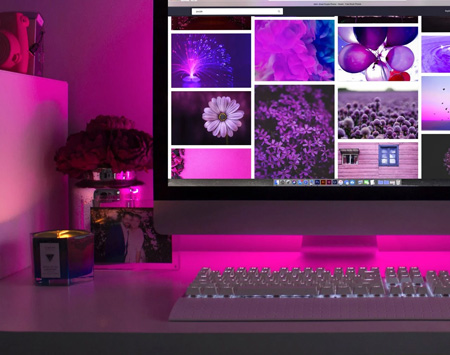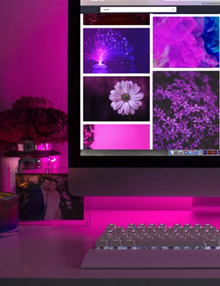There's much more to lighting your home than simple illumination. The way you light a room has a huge effect on the atmosphere you create within.
Colored light can have direct mental and physical effects on people, so if you want to create a specific kind of mood in your room, it's important to choose your lighting wisely. Here's what you need to know about how to create mood lighting using colored lights in your home.
Using Color in Mood Lighting
You don't need to use flashing neon to enjoy the effects of colored lighting. Ordinary bulbs, from LED to incandescent, can have different color temperatures, which emphasize different hues within the overall white-based glow.
Of course, single-color bulbs are also available, and these provide a more pronounced or dramatic impact. But which colors have effects on mood and atmosphere? Learn the basic mood each color creates here:
- Blue: Calming and cool, blue offers a sense of peace and serenity. Intense blue light may negatively affect sleep, so be careful about using blue light in a bedroom.
- Red: Warm, friendly and energetic, red gives an energy boost and promotes appetite. Use it when you want to build a sociable, companionable or intimate ambiance.
- Yellow: Similar to red, yellow offers a mood boost and an increase in mental stimulation. It also often creates a sense of optimism and cheer to go alongside the energy it supplies.
- Green: As the color of nature, green promotes a sense of harmony and peace. It's also easy on the eye to reduce fatigue and anxiety.
- Purple: The royal color purple is said to stimulate creativity and aid problem solving while also easing stress to promote restfulness.
Tips on How to Create Mood Lighting
Although the color used has the main effect on the mood your lighting creates, its brightness is important too. Stronger, whiter lights provide more energy and precision. On the other hand, lower light levels are more soothing, warming and romantic.
You can harness this effect to create mood lighting with the following tips:
- Avoid using a single overhead light fixture with one strong bulb, as the glare and shadows this can create is tiring on both the eye and mind. Instead, use several less-powerful lights placed carefully around the room.
- Use frosted bulbs with a lower wattage than you'd normally use to get a gentler glow.
- Install a dimmer switch so you can change the lighting levels provided by a single light fixture depending on the mood you want to create.
- Choose the light bulb's strength and color by room. For example, bathroom lighting should energize in the mornings, while bedroom lighting should help bring on sleep.
- Install colored wall lamps to complement a regular overhead light and provide an atmospheric backdrop that's not distracting.
Whether you're looking to create a warm and cozy living room or a mentally stimulating study, your choice of lighting matters. At Batteries Plus, we stock bulbs of all types and colors to suit every situation and we can offer friendly expert advice on any aspect of your lighting needs.

